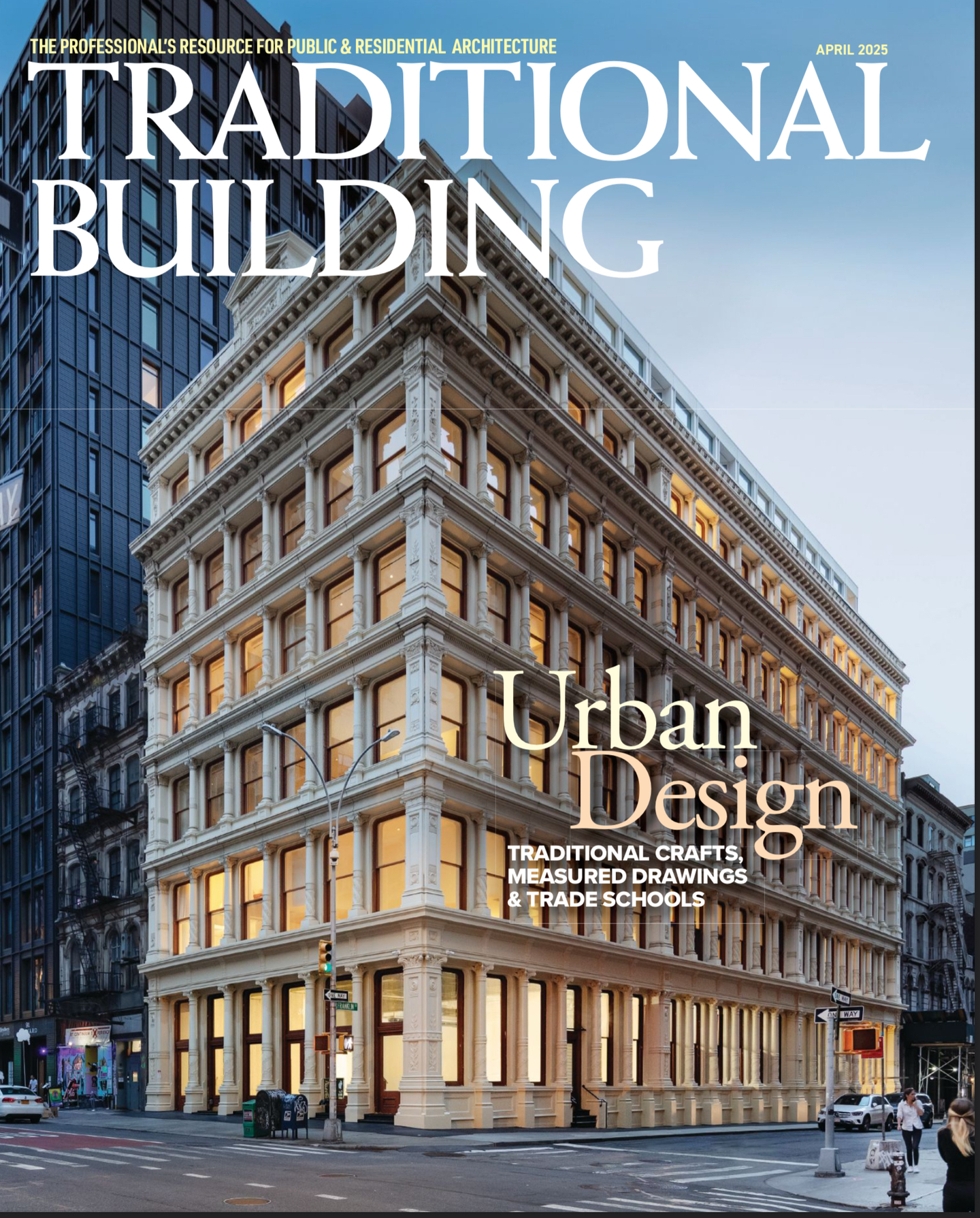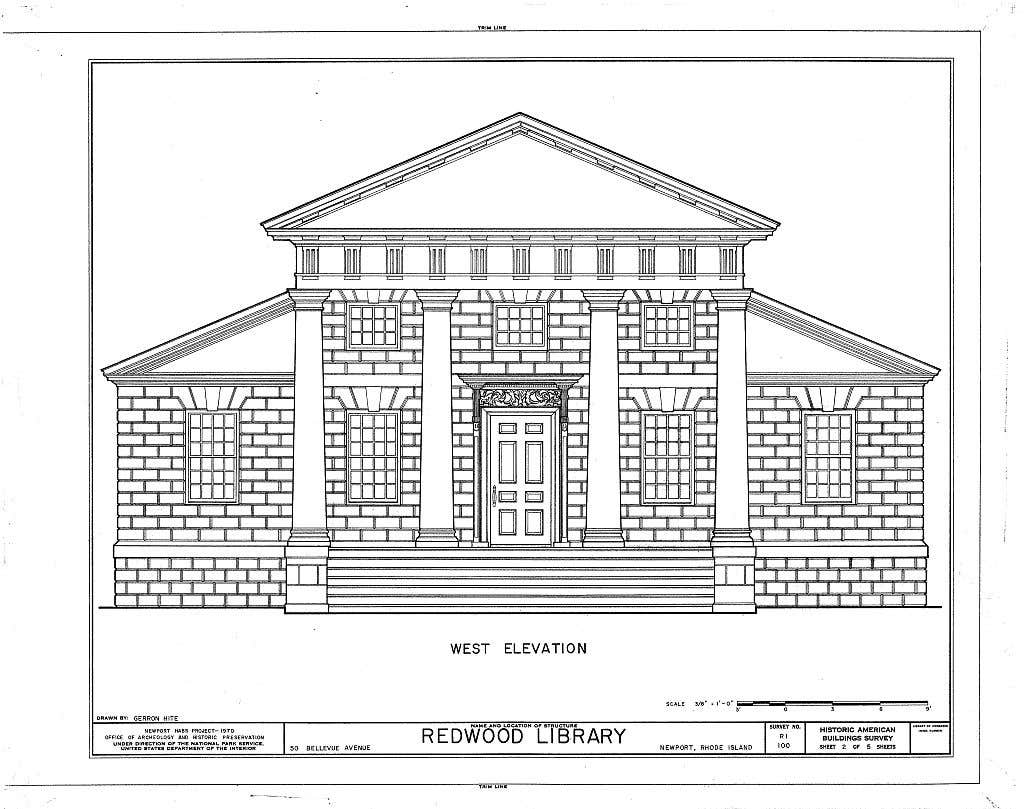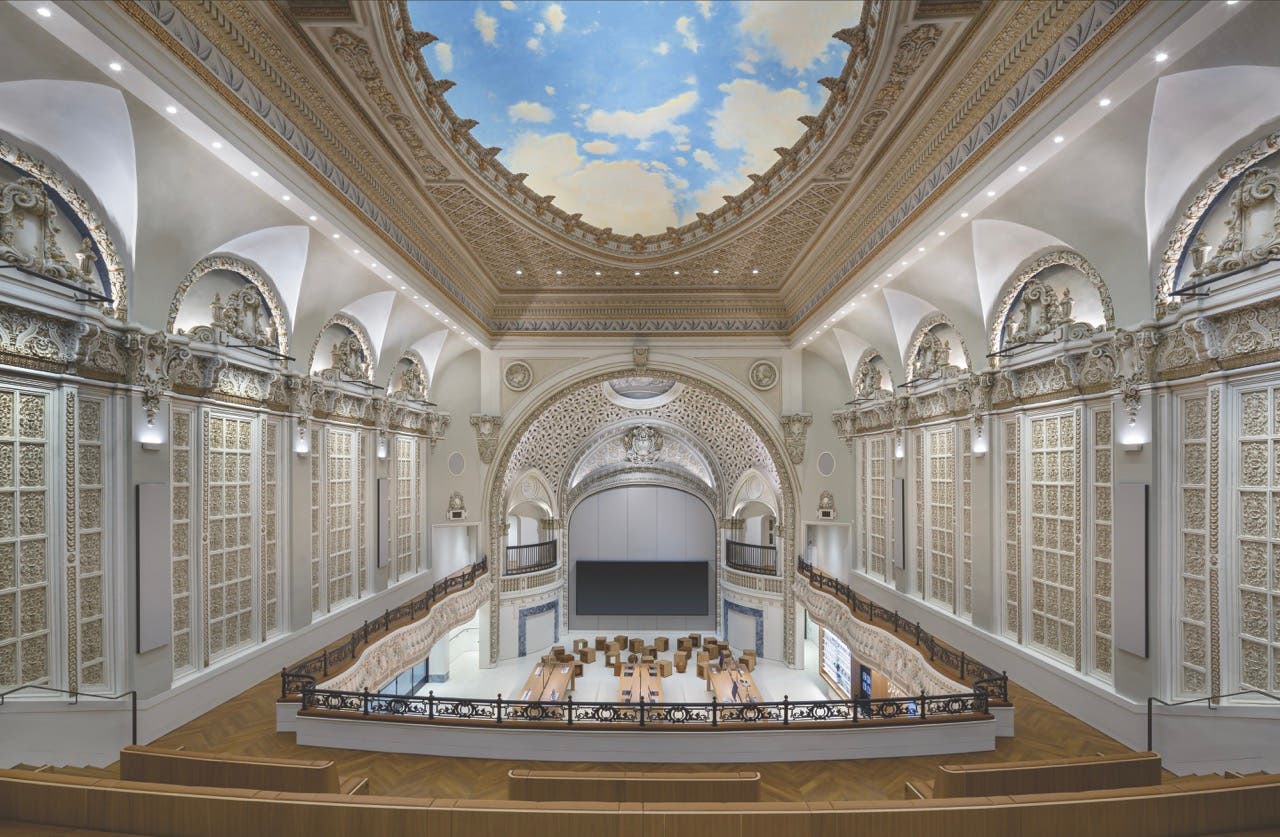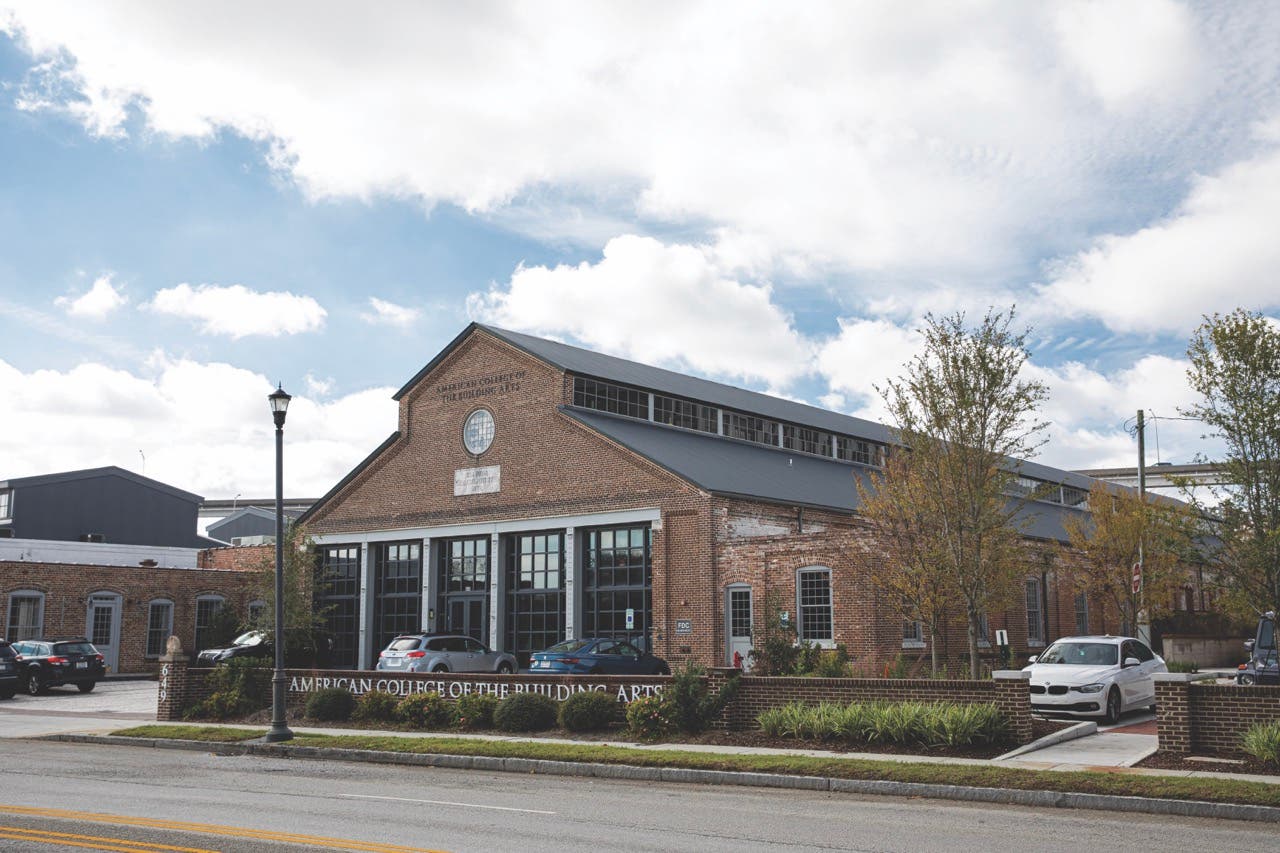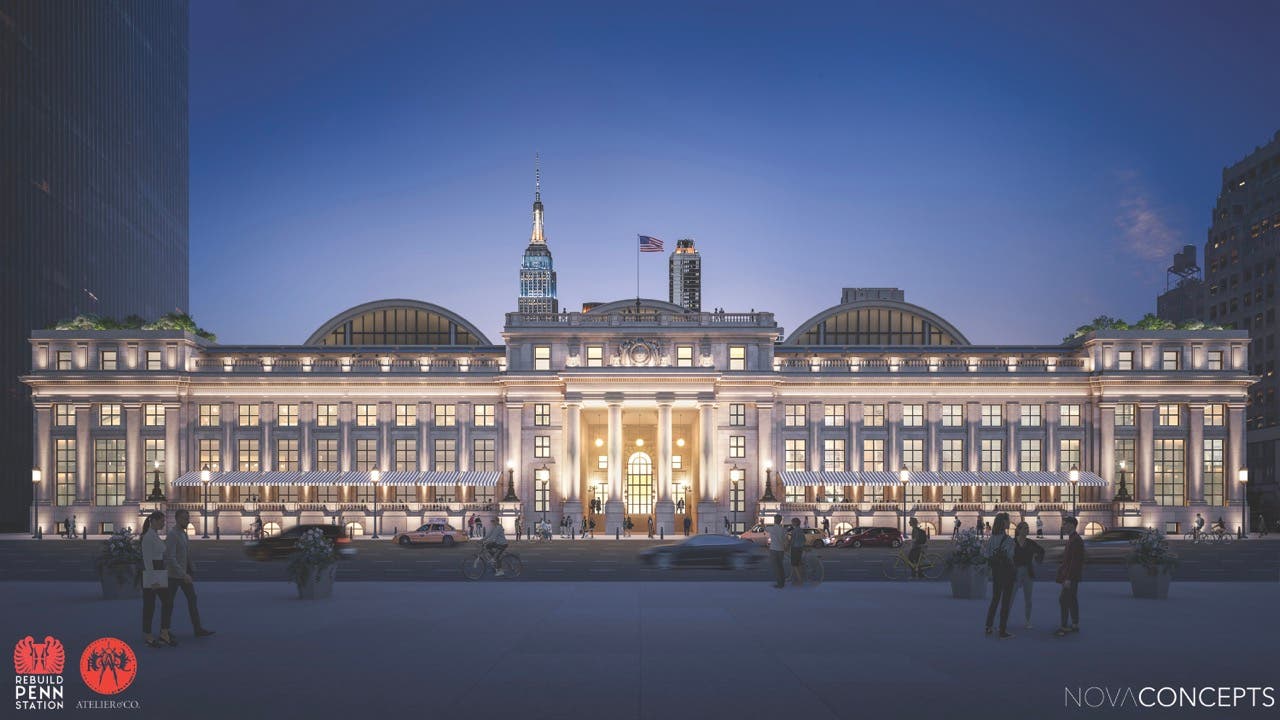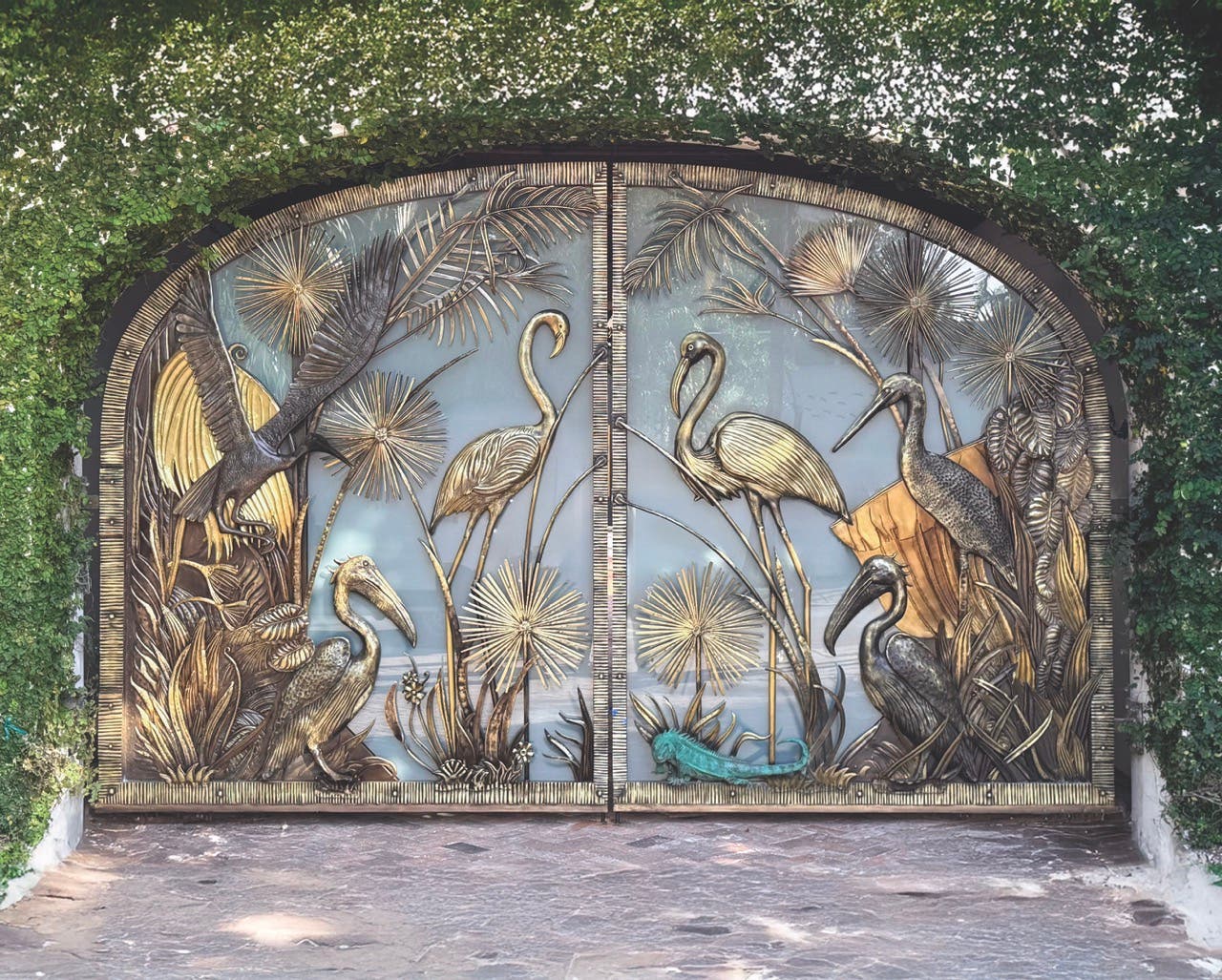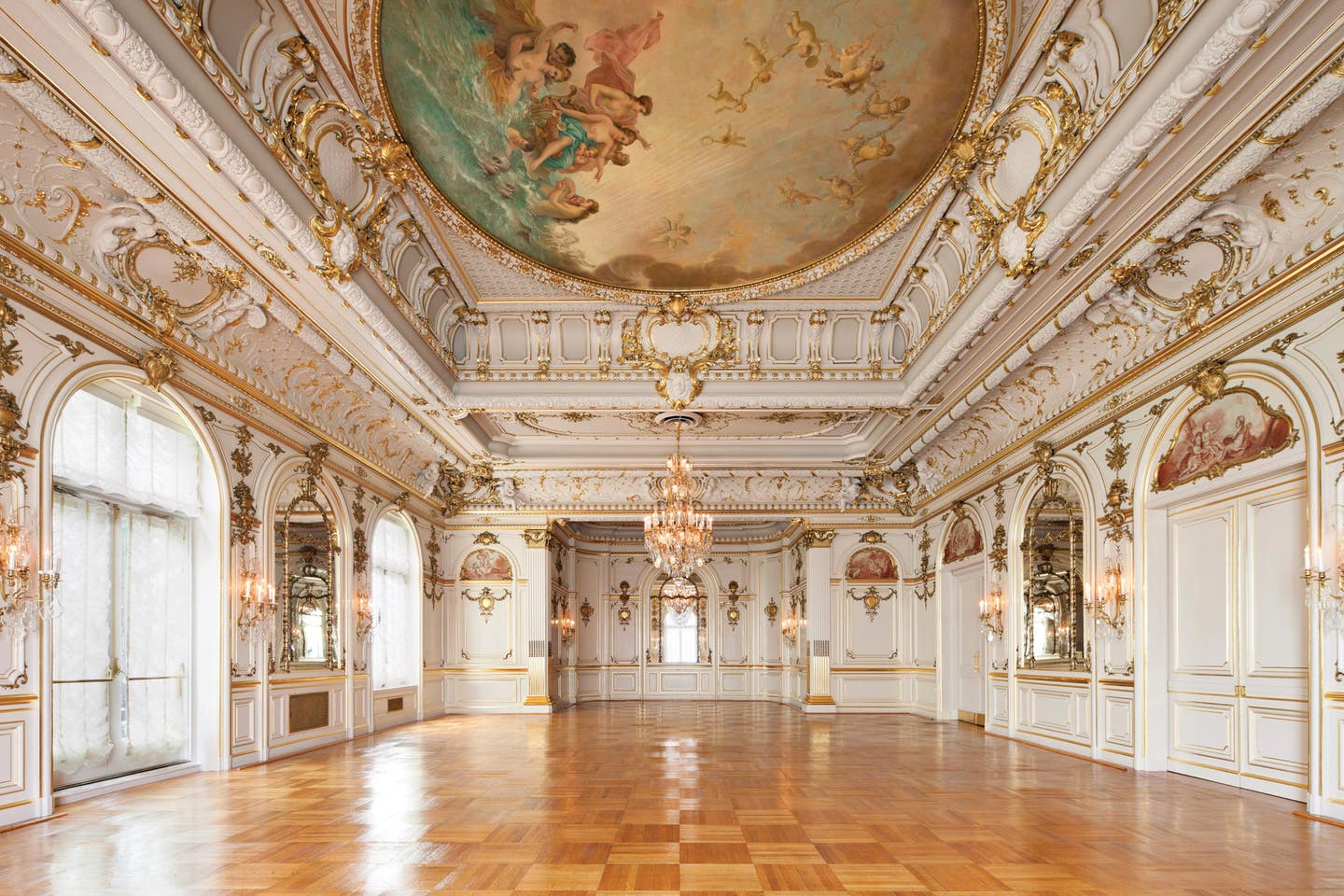
Profiles
Master Artisan John Canning
More than 60 years ago, master “tradesman” John Canning completed an apprenticeship in the applied decorative arts in his native Glasgow, Scotland. He studied at the Scottish Decorative Trades Institute, Glasgow Stowe College of Building, and Glasgow School of Art. During this time, Canning mastered the art of replicating Old World painting techniques and materials. He has always had a special fondness for churches and ecclesiastic artwork and decoration. His interest in the work was born independent of anything he had been exposed to as a young man—you might say it was innate.
From apprentice to journeyman to master and founder of John Canning & Company and Canning Liturgical Arts, the now-semi-retired artist reflects on his years spent honing his craft and sharing his expertise, which includes ornamental plaster restoration and stabilization, historic woodwork, architectural gilding, and decorative finishes. Notably, Canning is the only tradesman to have been inducted as an honorary member of the American Institute of Architects for his contribution to architecture. He is modest about his renown and quick to credit the innumerable restoration architects and scholars with whom he has collaborated over the decades. He repeatedly emphasizes the value of those professions when combined with the tradesman’s own talents.
After six decades, Canning is still in demand as a resource and consultant. He continues to hold lectures and perform demonstrations, which is why he is only semi-retired. He may be ready to fully step back from the profession, but the profession is not quite ready to let him go. Fortunately, he is still willing to roll up his sleeves for the right project and he prepared well for this transition into retirement when growing his company. Over the last 45 years since he formed the company, he has built a legacy that continues today with the apprentices he has trained and the family that have been a key part of the journey to where the company is today. The building blocks he established allows the company to continue forward in the successful historic restoration, conservation and preservation work he started.
What can you say about your apprenticeship and early years in the trade?
It was a strict and strenuous training.
The syllabus was developed under the auspices of London City and Guild. Under that program, apprentices were released from work to attend college twice a week without interruption in their wages on the condition they attend night school three times a week. I was able to attend the Scottish Decorative Trades Institute, Stowe College of Building, and night school at the Glasgow School of Art. I graduated from being an apprentice to being a journeyman, which allowed me to travel and ply my trade. Then I became a master, which is a misunderstood term these days. It doesn’t mean you are a master of your trade; you are a master as a journeyman. It means you can employ and teach apprentices. The company, now in its 45th year, is run by apprentices taught by me and uses traditional methods and materials to continue the company’s mission in perfecting preservation.
You emigrated from Scotland to the United States in 1969. What was your impression of this country’s approach to decorative arts restoration?
When I first arrived in Connecticut, there was a growing interest in historic preservation in the Northeast. After speaking at the Hartford Architecture Conservancy, it became clear to me that the tradesman was the missing link in preservation projects. There were scholars to do the scientific research, and architects and engineers to make structural recommendations, but input from tradesmen and their applied knowledge of Old World finishes, materials, and techniques, and the ability to interpret scholarly studies as well as the original methods of execution was missing. To me, architects, scholars, and knowledgeable tradesmen are the ideal preservation team.
Is there a project that stands out distinctly in your memory?
The Connecticut State Capitol building, which I worked on 35 years ago. It was designed by Richard Mitchell Upjohn, and completed in 1880. The exterior is often said to be Second Empire but inside it is high Victorian Gothic; the original decorator was a fellow Scotsman, William McPherson. The thing that appeals to me about the building is its purity and consistency of design. It is in the Aesthetic Movement style, best described as rigidly symmetrical stylized flowers and leaves, flat-two dimensional with a hint of Middle Eastern influence. The decorative stylized flowers and leaves are flat and two-dimensional; there’s no hint of a third dimension. The style is consistent throughout the building. Very few buildings have that level of consistency of a decoration style in every aspect.
The restoration architect for the project, Dominick Cimino, commissioned my studio to create a new composite design for the building’s Senate chamber, which was formerly the library. I took what I knew about the Aesthetic Movement and its motifs by William McPherson, as well as the original decoration I found in the library, and I incorporated all of it into a new design for the chamber. Because it was a high-profile building and the new design was based on my research, I felt it necessary to have it peer reviewed—a practice I still adhere to today.
What does the collaboration between architect, scholar, and tradesman look like for the type of projects you do?
To conduct a historic paint study and analysis, first, there’s the archival research, which is where the scholar’s area of expertise comes in—they dig up photographs, specifications from the original architect, newspaper clippings with descriptions of interiors, etc. What we do as tradesmen is field research—we know what to look for and where decoration will likely be uncovered. We expose the original decoration, which is done by removing decades, sometimes centuries of paint, until we reach the targeted time period. Then there is the scientific research, which involves analyzing the original materials and stratigraphy. To me, the most important part of the paint study is the interpretation of all these things together.
Why the interest in churches specifically?
Universally, churches have always had the highest quality of workmanship and design. Church designs represent a reverence not found in other structures. And the deep spiritual nature of these designs brings another dimension to the integrity of the craft and the inspiration for the craftsman, whose honor it is to restore these inspirational and beautiful works. When it comes to churches, understanding the style of architecture and the patron/patrons to whom it is dedicated to is most important.
Can you describe a few of the techniques you use?
We have mastered many methods for exposing original decoration—we know how to open historic “windows,” if you will—both mechanically and chemically. And as we are exposing it, we understand what we are looking at, including paint types.
To this day, my studio employs traditional methods and materials that have been used for centuries. Technology in the paint field has not developed to improve upon traditional materials that much, in my opinion. For example, we restored an 1845 Greek Revival house, where we created a Pompeian decorative scheme. In that period, marble fireplaces had cast-iron surrounds. The client wanted the surrounds to be sandblasted and painted black. Through demonstrations, I was able to explain that the traditional methods for treating cast-iron surrounds involved a black leading process. Black lead is a misnomer, it is really a finely ground graphite suspended in certain waxes, when applied properly over clean cast iron, and polished, it imparts a silver black gunmetal finish. The metallic luster highlights and beautifies the raised ornament.
What do you find most challenging and/or gratifying about your work?
It’s like an archeological dig through paint history. The discovery is very exciting. And marrying up the revealed decoration with archival research, old photographs, and newspaper clippings—that’s always a rewarding challenge.
I also really enjoy the new work we do. It’s mostly period decoration and art. We create designs not only in the Aesthetic Movement style but also Art Nouveau, Art Deco, Chinoiserie, and of course Classical. Just yesterday in the studio, they were working on some Trompe l’Oeil—I prefer to call it “illusionistic painting”—mockups on canvas. Recently, I had a discussion about the various planes and levels that are brought out using that technique to represent three-dimensional cast plaster or molding. It’s exciting work.
The materials and methods you are re-creating are often centuries old. Are you ever in a position where you need to innovate solutions because the ingredients you need are no longer available?
I’ll speak to that by way of example. We just finished wood-graining doors for the Pavilion VII—designed by Thomas Jefferson—on the University of Virginia campus. I had never done—and I don’t think anyone has—an in-depth study of the traditional materials. They included a protein-bound distemper. To re-create that, we used beer; the protein from beer is strong enough without being too strong to bind the powdered pigment. We also use linseed oil and gum spirits of turpentine. Those materials are getting harder and harder to purchase. Now we must go to art supply stores to buy gallons of cold-pressed linseed oil.
Are there scholarly works that you have returned to time and again?
I have been using Owen Jones’s book, Grammar of Ornament, for guidance since I was an apprentice. His first proposition is that the decorative arts should arise from and be properly attended upon architecture—meaning, when you understand the architecture, you begin to understand the placement of designs and colors.
Where have you traveled to study and continue to advance your knowledge of the field?
Early on I became intrigued with early American folk art by itinerant painters like Moses Eaton and Rufus Porter, who traveled the Northeast. In fact, I prided myself on being able to copy Rufus Porter’s scenes. When I would travel to other U.S. cities or abroad, I would seek out a church to admire the decoration—the Trinity Church in Boston, for instance, which is an H.H. Richardson building. He commissioned John LaFarge to do the decoration. It was a great thrill working in that building, seeing the methods and materials LaFarge employed. I was asked to identify the kind of paint that had been used; it had a thick impasto buildup. It turned out to be encaustic, which is a melted-wax medium that dries quickly and hardens and is no longer used today in architectural painting, I realized the purchase of that many candles used when it was being painted originally would have kept the encaustic warm and fluid. I found that intriguing; we are always discovering things like that.


